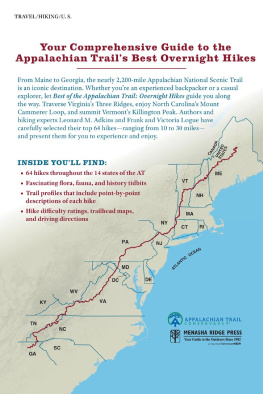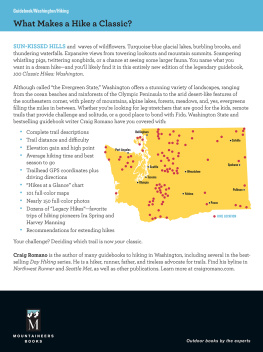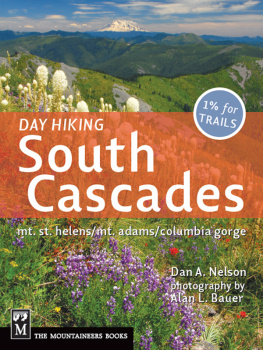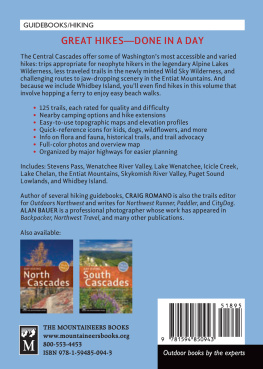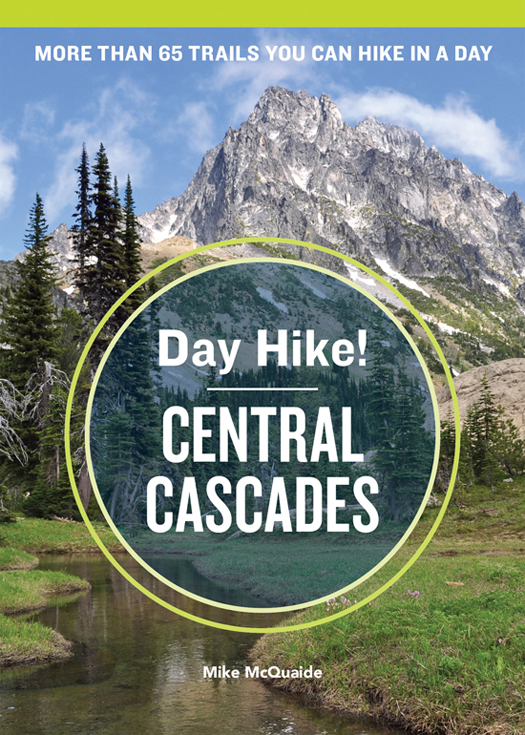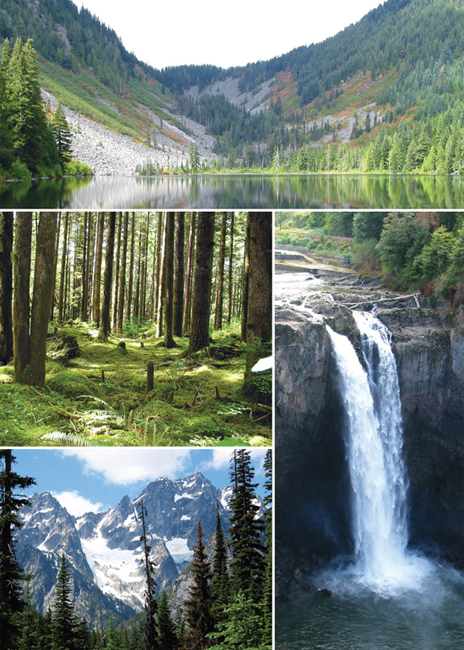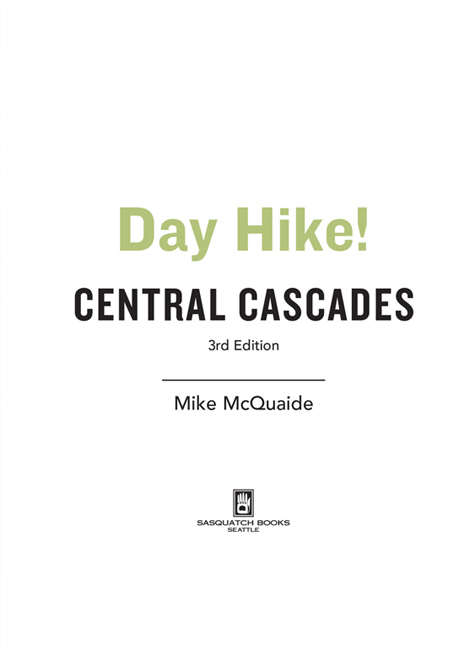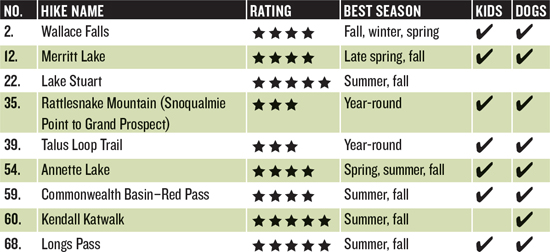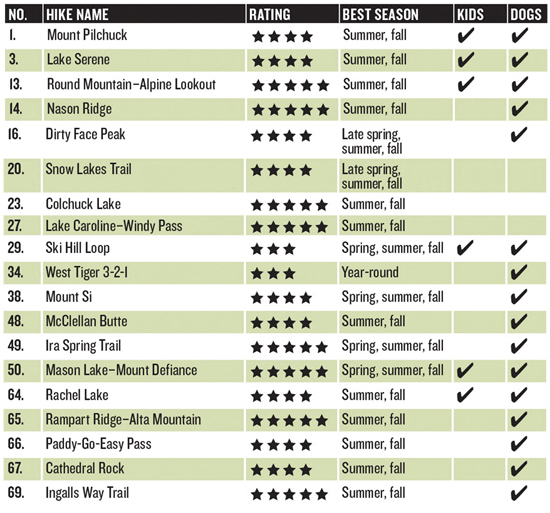Copyright 2008, 2014 by Mike McQuaide
All rights reserved. No portion of this book may be reproduced or utilized in any form, or by any electronic, mechanical, or other means, without the prior written permission of the publisher.
Published by Sasquatch Books
Cover photograph: Jeremy Duncan
Cover design: Hillary Grant/Joyce Hwang
Interior photographs: Mike McQuaide. Additional photos by Jim Kuresman ()
Interior maps: Marlene Blair
Trade Paperback Interior design: Andrew Fuller/Anna Goldstein
Trade Paperback Interior composition: Sarah Plein
Library of Congress Cataloging-in-Publication Data is available.
eBooks ISBN: 978-1-57061-849-9
Trade Paperback ISBN: 978-1-57061-848-2
IMPORTANT NOTE: Please use common sense. No guidebook can act as a substitute for experience, careful planning, the right equipment, and appropriate training. There is inherent danger in all activities described in this book, and readers must assume full responsibility for their own actions and safety. Changing or unfavorable conditions in weather, roads, trails, snow, waterways, and so forth cannot be anticipated by the author or publisher, but should be considered by any outdoor participants. The author and publisher will not be responsible for the safety of the users of this guide.
Sasquatch Books
1904 Third Avenue, Suite 710
Seattle, WA 98101
(206) 467-4300
www.sasquatchbooks.com
v3.1
HIKES AT A GLANCE
EASY
Click to view the details
MODERATE
Click to view the details
MODERATELY DIFFICULT
Click to view the details
DIFFICULT
Click to view the details
EXTREME
Click to view the details
ACKNOWLEDGMENTS
A huge shout-out of thanks, gratitude, and appreciation to the following individuals and organizations for offering their support, expertise, and friendship: Bud Hardwick, Jim Kuresman, Doug McKeever, Tim Schultz, Frank Schultz, Paul Ricci, Rick Lingbloom, the Steeles, Margaret Gerard, Washington Trails Association, the Seattle Times , and of course, the fine people at Sasquatch Books.
THE CENTRAL CASCADES
The Cascade Mountains stretch all the way from the Fraser River in lower British Columbia south to Northern California. For the purposes of this book, the Central Cascades are defined as that section of the range easily accessed from Highway 2 and Interstate 90. Basically, the corridors from Everett to Leavenworth, and Seattle to Cle Elum. Also included is Mount Pilchuk, because of its prominence and proximity to Everett.
From soaking wet, deep valley rain forests to high and dry alpine wonderlands, the Central Cascades offer the gamut of hiking experiences. There are short, riverside walks to places such as Twin Falls, where the Snoqualmie River plunges 150 feet in a misty explosion below, as well as mountaintop vistas more than a mile-and-a-half high such as Little Annapurna where, on clear days, youll swear you can see the four corners of Washington Stateand everything in between. (Take Rachel Lake and Rampart Ridge, for instance; theyve got a bit of both.)
Though both Highway 2 and Interstate 90 trend toward the south a bit, they run west to east, more or less. Thus, as you drive either across the state, you can watch as the terrain undergoes incredible and awe-inspiring changesfrom the deep evergreen fir and cedar forests, lingering mountain snow, and buckets of rain on the west side to the east sides sunny days, dry pine forests, and penchant for triple digit temperatures. That east-west diversity is especially dramatic along Highway 2, because its farther north and climbs higher than Interstate 90; Stevens Pass tops out at 4,061 feet, Snoqualmie Pass at 3,022 feet. As such, both highways are springboards for a smorgasbord of wildly diverse hiking experiences.
The west side is known for the wet face it tends to put on things. Clouds rolling in from the west tend to dump most of their moisture on the west side of the Cascade crestelevation, about 3,000 to 5,000 feetbefore they ever make it to the east side. From November to April, at elevations above 3,000 feet or so, this usually means snow.
The rest of the year those clouds offer much in the way of rain, showers, drizzle, fog, and precip. (From mid-July to the end of August, they do give it a rest.) Because of the heavy precip, youll come across more snow on the west side. Not surprisingly, waterfallsthats why theyre called the Cascade Mountains after alland water, in general, are more plentiful on the west side, too.
With the clouds mostly rained and snowed out by the time they cross the crest, the east side enjoys less snow and rain than the west, and more sunny days. Most years, mountain trails on the east sides of Snoqualmie and Stevens Passes are clear of snow weeks earlier than those on the west.
Common trees in the Central Cascades include western red cedar, western hemlock, Douglas fir, and Pacific silver fir, with the east side of the Cascades boasting ponderosa pine, Engelmann spruce, and subalpine and western larch. The Enchantment Lakes is world-famous for its larch, which in fall turn a brilliant yellow-gold.
Being a day-hiking guide, this book wont pretend to be a comprehensive guide to Northwest flora and fauna; critter-wise and plant-wise, the species are too numerous to catalogue, but some of the common folk worth a mention include bald eagle, osprey, black bear, Roosevelt elk, mountain lion, hoary marmot, pika, mountain goat, American dipper, raven, and, on the east side, the occasional rattlesnake. Among the plants youre likely to see are trillium, Indian paintbrush, subalpine lupine, mountain heather, columbine, devils club, huckleberry, blueberry, and countless varieties of fungis and algae.
Alpine Lakes Wilderness
Most of the hiking trails in this book are on land in the Mount BakerSnoqualmie or Okanogan-Wenatchee National Forests. Although not national park land, many trails are in the Alpine Lakes Wilderness, a spectacular 394,000-acre mountain and forest wonderland sprinkled with nearly 700 lakes, which is comanaged by both forest agencies. Created in 1976, the wilderness is easily accessed at numerous points along Interstate 90 and Highway 2, and about half the states population lives within an hour of Alpine Lakes Wilderness. As such, privacy on some trails is not something thats always easy to find. But weekday visits dramatically improve your chances. Day permits are required for hiking the Alpine Lakes Wilderness; theyre free and are available at trailheads.



